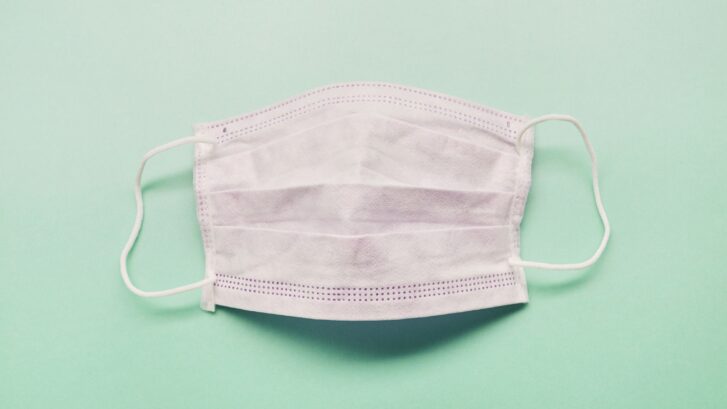The Latest Coronavirus Mask Guidance
As our concierge doctors have mentioned in the past, data on the new coronavirus is continually evolving as we gain more experience with it. One of these areas is in the use of face masks or face coverings for the general public.
The latest guidance from the Centers for Disease Control and Prevention (CDC) is that everyone should wear some type of face covering when they’re out among the general public where people gather, such as grocery stores.
Original thinking
This new guidance is not because the original concerns have changed, but because we now know more about the transmission of COVID-19.
For a bit of background, the coronavirus virions (virus particles) each measure between 0.1 and 0.2 microns in diameter. For comparison, a human hair is approximately 100 microns in diameter. Thus, it takes a specially woven mask to filter out particles as small as the coronavirus.
These, of course, are the medical-grade masks known as N-95 masks, because they have been shown to filter out 95 percent of virions
As we told you in early February, there are several problems with the face masks used by the general public.
- Typically made of paper, they don’t filter as many particles as the medical-grade N95 masks, and they also leave the eyes exposed, allowing the virus to enter that way.
- If they aren’t changed regularly, they could eventually begin to trap viruses that you then breathe in.
- Most people don’t know to proper way to wear them, take them off, or clean them after wearing.
The biggest problem, however, with wearing surgical masks or even homemade face coverings to fend off the coronavirus is that they may give users a false sense of security, and they then may not take proper precautions like hand washing and social distancing because they think they’re protected.
These issues still exist.
What’s changed
What’s different today is growing evidence that:
- the coronavirus can by transmitted by those who are infected but have not yet shown symptoms (“presymptomatic transmission”), as well as by those who are infected and will never show symptoms (“asymptomatic transmission”); and,
- we now know that the virus can be transmitted up to six feet by infected persons who cough, sneeze, talk, sing, or even breathe, sending out tiny airborne particles (“droplet nuclei”) that can linger in the air for as long as three hours, then drop to surfaces which then become contaminated.
This helps account for the rapid, almost mysterious, spread of the virus among the population. Asymptomatic and presymptomatic people are transmitting the virus without knowing it. So more experts are urging the public to don some type of face covering to prevent transmission of the virus to others.
The fact that the use of non-medical grade face coverings won’t prevent you from getting it still holds true, although it will prevent you from touching your nose and mouth while away from home, and keep you from becoming infected that way.
So why the change?
As one medical professional put it during an interview, “My mask protects you; your mask protects me.” In other words, it’s more than common courtesy; it’s something we can all do to help save lives and “flatten the curve,” i.e., lower the rate of new cases.
The CDC offers both sew and no-sew instructions on how to create your own face covering here: https://www.cdc.gov/coronavirus/2019-ncov/prevent-getting-sick/diy-cloth-face-coverings.html, as well as guidance for wearing, removing, and cleaning it properly.
It also offers this admonition, with which we strongly concur:
“The cloth face coverings recommended are not surgical masks or N-95 respirators. Those are critical supplies that must continue to be reserved for healthcare workers and other medical first responders.”
Finally, we can’t stress this enough: A face mask or covering is no substitute for the good hygiene that everyone must continue to practice:
- Stay home if at all possible.
- Stay at least six feet away from others when you must leave home.
- Avoid touching the T-zone (eyes, nose, mouth) until after you’ve washed your hands.
- Wash your hands for at least 20 seconds with soap and water, or use an alcohol-based sanitizer if soap and water aren’t available.
And if you do have access to a supply of N-95 respirators or other medical-grade masks, we hope you will donate them to medical workers who are in close and sustained contact with the coronavirus as they battle to save lives.

